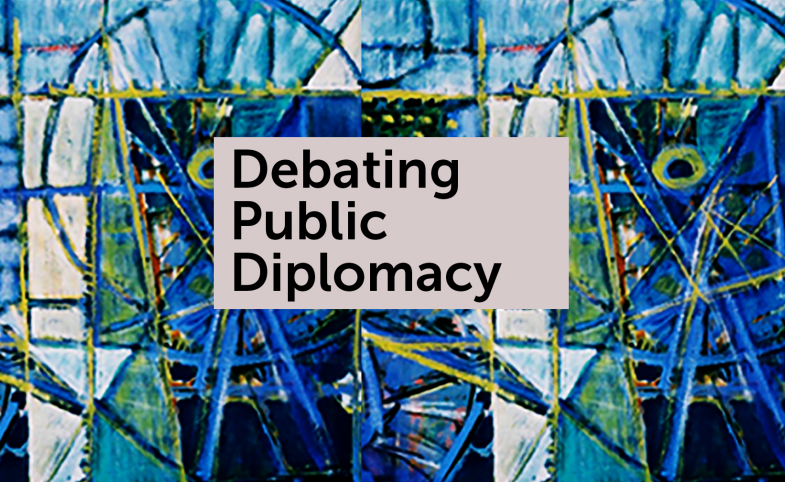We have asked several foreign ministries to answer some questions about their #DigitalDiplomacy. Here’s a guest post from the European External Action Service.
 Centuries-old customs and habits have been eroded in less than a decade. Think, for instance, of the proverbial neutrality of diplomatic language and how the immediacy of social media and live-streaming have re-shaped diplomacy into something far more direct than ever before.
Centuries-old customs and habits have been eroded in less than a decade. Think, for instance, of the proverbial neutrality of diplomatic language and how the immediacy of social media and live-streaming have re-shaped diplomacy into something far more direct than ever before.
The world is shrinking. Today, two thirds of the planet use the Internet and where there’s a challenge, there’s also an opportunity. We can now communicate directly with virtually anywhere in the world. And it’s not just about Twitter and Facebook. Other platforms like Instagram, WhatsApp and Snapchat have already made a breach in the diplomatic walls. Each one of them still requires a different tone, a different language to get our messages across. Each of these networks has a life of its own, but the codes and products which once distinguished different social media markets are now much more integrated across the board. Today, video hosting and photo editing features are available everywhere, not to mention the use of hashtags as one of the very basic conventions of social media engagement.
So how does the European External Action Service (EEAS) navigate the social media landscape?
Social media are a vibrant environment and it is not easy to keep pace with the constant changes going on. The social media team within the EEAS Strategic Communications Division plays a key role in following the latest trends and adapting our approach to guarantee the maximum visibility for the work of High Representative/Vice President Federica Mogherini and the latest news about the EU’s external action. Two years ago we started producing our own infographics, a year later our focus shifted to more images and more photos. Now videos have a prominent place on our homepages. More than ever, we need to keep adapting, to embrace change and to learn fast.
With the support of the EU Delegations around the world, the EEAS is strengthening links on social media to foster dialogue and cultivate mutual understanding between European and third countries, especially among young people. The next generation are ready to listen and engage in lively two-ways dialogues, which is vital in this most challenging of times. We need to tap into this potential. We work to promote Federica Mogherini’s work and the positive impact on the day-to-day lives of those who benefit from EU-funded projects. We aim to increase the understanding of the EU overseas and tackle the issues of disinformation and radicalisation wherever they occur.
Facebook and Twitter are still our preferred social media platforms. Their scope still justifies this, as no other platforms allow you to tap into more than 1.6 billion active users covering the full spectrum of strategic audiences we target. Secondly and more importantly, as Facebook and Twitter keep evolving rapidly to respond to the needs of their users, they offer the highest rate of engagement and the biggest diversity of content compared to other platforms.
Last January, we succeeded in communicating something historic quickly and effectively by releasing a short video-clip on Facebook and Twitter on the final implementation of the nuclear deal with Iran, which reached an audience of millions. It was by far our best post on any social media platform to date. Not just because of likes, comments and shares but also because it coincided with a truly historic diplomatic achievement: what could be more satisfying than that?
The reach of the EEAS goes far beyond the social media platforms managed from headquarters. Our goal is to beef up the social media engagement of our network of 139 Delegations and Offices around the world to leverage the full potential it holds for conveying EU messages to strategic audiences we wouldn’t otherwise reach.
Already, 56 EU Ambassadors are using Twitter in their professional capacity. From 5 in 2011, 123 EU Delegations are now active on Facebook and 82 on Twitter, with an increasing number engaging on YouTube and Instagram, wherever relevant to the local context. We are all learning together how to do better as Delegations report on their successes and share best practices. Our corpus of social media guidance is being consolidated, added to recommendations given to staff in charge of the platforms in Delegations during regional Strategic Communications seminars, which are the opportunity to hammer home core principles: know your local audience to best craft each Delegation’s social media engagement; what do they like?; what gets their attention?; which language do they speak?; what are their priorities?; what do they associate the EU with?
Whether by taking a picture with a smartphone of a sunset in their host countries or by making playful references to local pop culture, informal engagement is equally vital. Many Ambassadors and Delegations have found the right balance and tone, truly connecting with local audiences, distilling policy messaging mixed with a more personal touch. For instance, the artistic photos of the country and its people shared by the EU Ambassador to Afghanistan with the hashtag #
ee have helped increase his reach considerably, gaining sympathy from local audiences and also increasing the visibility of policy messages. By paying tribute to the local culture and shedding light on the people in the host country on Twitter, an EU Ambassador touches a very core and essential element in human communication: emotions. Notwithstanding the importance of numbers on analytics, it is engagement which is our greatest measure of success.
I am very proud of the work of my team and of our achievements on social media. Our reach is growing exponentially, the number of platforms we use is expanding and we are becoming more adept at embracing the latest trends and technologies.
In this, we have the unwavering personal support of Federica Mogherini for digital diplomacy. The EU’s chief diplomat is a true believer in the power of social networks, is herself an enthusiastic and regular Twitter user and encourages us to push forward with our work. With such support from the very top, we will be even more ambitious in developing the social media strategy of the EEAS.
By Michael Mann (@MichaelMannEU), Head of Division for Strategic Communications, European External Action Service (@eu_eeas)
Social media has become the main driving force for change in diplomatic communication








